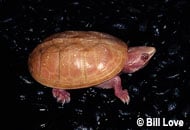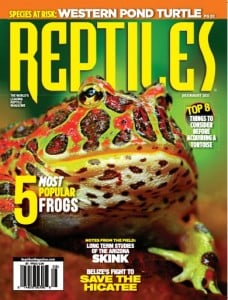Common Musk Turtle
Found throughout the eastern United States and southern Canada (Ontario), stretching from Maine to Florida and west to central Texas.
The common musk turtle is also called “stinkpot” because of its ability to expel a rather repulsive musky scent from glands on its plastron when disturbed. Common musk turtles can turn their necks and reach surprisingly far behind them, often pinching the fingers that were holding them. However, most common musk turtles settle down in captivity and will stop emitting the foul smell. Because of their small size, they can make good pets.
Common musk turtles are capable swimmers and do well in aquariums that contain deep water, however they must be provided with structure, such as submerged logs, where they can rest with their heads extending out of the water. They do not need to bask all that frequently, as evidenced by the thick growths of algae that often cover the shells of wild-caught individuals. They should be provided with the opportunity to bask, however.
Aquariums should contain submerged logs and stones, as well as plastic plants. Make sure that none of the artificial crevices you provide will unintentionally trap a turtle underwater.
Common musk turtles are generally carnivorous. In the wild they often crawl along the pond or stream bottom in search of aquatic insects, worms, and especially small snails. Dead fish and other carrion are scavenged when available. Musk turtles do not prey on live, healthy fish, although they may capture one in an aquarium setting.
Water should be kept clean and filtered.

